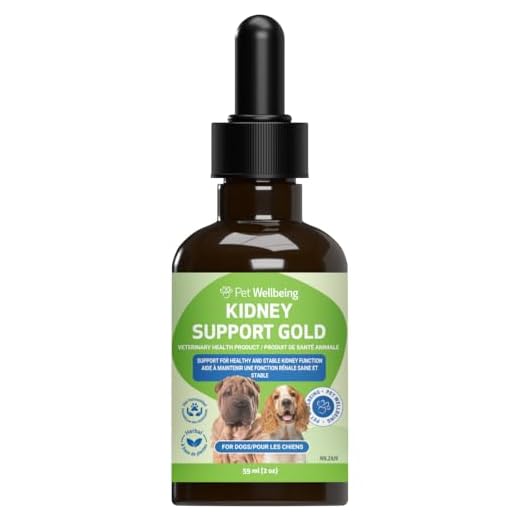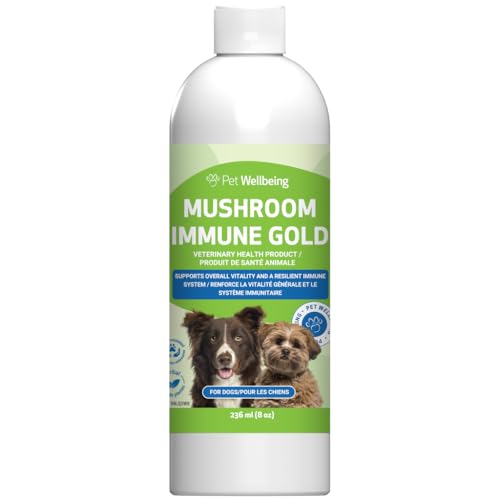




Watch for sudden changes in your furry friend. If you notice a decrease in energy, a lack of appetite, or unusual vomiting, take action. These could be early indicators of a serious health concern that requires immediate attention.
Pay close attention to any fluctuations in body temperature. A fever can signal an underlying infection. Additionally, observe for any signs of dehydration, such as dry gums or excessive panting. These symptoms can escalate quickly, so it’s wise to be vigilant.
Monitor your pet for any signs of jaundice, characterized by yellowing of the eyes or gums. This can indicate liver involvement, a critical aspect that needs prompt veterinary evaluation. Regular check-ups can help catch these signs early, ensuring your beloved companion receives the care they need without delay.
Signs of Infection in Canines
Recognising the indicators of this disease is crucial for timely intervention. Commonly observed issues include:
- Fever: An elevated body temperature signals distress.
- Vomiting: Frequent retching or presence of blood may occur.
- Diarrhoea: Watery stools, sometimes with blood, can be alarming.
- Loss of appetite: A noticeable decrease in food intake raises concern.
- Weakness: Lethargy or decreased activity levels can be significant.
- Jaundice: Yellowing of the eyes, gums, or skin indicates liver involvement.
Additional Indicators to Observe
Watch for these supplementary signs that may indicate a more severe condition:
- Increased thirst: An unusual urge to drink more water may be evident.
- Dehydration: Dry gums and skin elasticity can signal a serious issue.
- Respiratory distress: Laboured breathing or coughing should prompt immediate attention.
- Abdominal pain: Signs of discomfort, such as whining or reluctance to be touched.
Seeking veterinary care at the first sign of these issues can make a significant difference. Regular check-ups can also help in early detection and prevention.
Understanding the Early Symptoms of Leptospirosis
Recognising the initial indicators of this infection is vital for timely intervention. Early signs can often be subtle, making it crucial to observe any behavioural or physical changes in your pet. Key early manifestations include:
| Indicator | Description |
|---|---|
| Fever | An elevated body temperature can be one of the first clues. Monitor your pet’s temperature if you suspect illness. |
| Loss of Appetite | A sudden disinterest in food is often noticeable. If your furry friend skips meals, take it seriously. |
| Excessive Thirst | Increased water consumption may occur. Keep an eye on their drinking habits. |
| Frequent Urination | Noticing more trips outside can indicate a problem. Track any changes in bathroom habits. |
| Vomiting | Repeated episodes of vomiting should raise concerns. This may signal distress in their system. |
| Lethargy | A lack of energy or a noticeable decrease in activity levels can be an early warning. |
Observing these signs closely will aid in early detection. If you notice any combination of these indicators, consult your veterinarian without delay. Quick action can make a significant difference in treatment outcomes.
Identifying Gastrointestinal Symptoms in Affected Canines
Watch for signs of vomiting and diarrhoea. If your furry friend suddenly starts to retch or has loose stools, it could indicate gastrointestinal distress. Monitor the frequency and consistency of their bowel movements closely.
Changes in Appetite and Thirst
A decline in appetite, or reluctance to eat, often accompanies other gastrointestinal issues. If your pet is leaving food in the bowl or seems uninterested, it’s a cause for concern. Additionally, increased thirst may also occur, so keep an eye on their water intake.
Abdominal Discomfort
Observe your companion for signs of abdominal pain. Symptoms include whining, excessive licking of the abdomen, or reluctance to be touched in that area. If your dog is arching their back or appears to be uncomfortable when lying down, seek veterinary advice.
Timely action is key. If you notice these signs, consult with a veterinarian for a thorough examination and necessary tests. Quick intervention can make a significant difference in your pet’s recovery.
Recognising Signs of Kidney Dysfunction in Canines
Monitor your furry friend for increased thirst and urination. If you notice them drinking more water than usual and needing to go outside frequently, this could indicate an issue. Pay attention to any sudden changes in appetite. A decrease in food intake, or refusal to eat altogether, can signal underlying health concerns.
Weight loss is another red flag. Keep an eye out for any noticeable thinning, as this may suggest that the kidneys are struggling. Additionally, observe their energy levels. Lethargy or a general lack of enthusiasm for walks and playtime can be a sign of trouble.
Check for any unusual behaviour, such as excessive vomiting or diarrhoea. These gastrointestinal issues can arise from kidney problems, especially if they persist. Bad breath, particularly if it has a strong or ammonia-like odour, is another indication that kidney function may be compromised.
If you notice any of these signs, consult your veterinarian promptly. Early detection and intervention can make a significant difference in treatment outcomes. Also, while caring for your canine, ensure you keep their living area clean and hygienic; for those who use appliances like a multi-cooker, you might want to check out how to clean ninja multi cooker for tips on maintaining a tidy kitchen.
Observing Changes in Behaviour and Energy Levels
Watch for notable shifts in your pet’s energy and behaviour. A sudden drop in activity or enthusiasm can signal underlying health issues. It’s crucial to monitor if your furry friend is less playful or reluctant to engage in walks or fetch. This lethargy may be accompanied by a lack of interest in food or playtime, which could indicate discomfort or pain.
Common Behavioural Changes
Behavioural alterations can manifest in various ways. If your canine companion becomes withdrawn, anxious, or irritable, these may be signs of distress. Pay attention to any unusual vocalisations or changes in sleeping patterns. For instance, if your dog suddenly seeks solitude or avoids interaction, this warrants further investigation.
Energy Level Fluctuations
Keep an eye on your pet’s stamina. If they tire easily during activities they once enjoyed, it could point to an underlying issue. Compare their usual energy levels with current behaviour; noticeable differences can be a red flag. Additionally, if your dog is exhibiting signs of confusion or disorientation, this may further indicate a serious health concern.
| Behavioural Signs | Possible Implications |
|---|---|
| Increased lethargy | Possible illness or discomfort |
| Avoidance of play | Potential pain or distress |
| Changes in vocalisation | Discomfort or anxiety |
| Isolation | Sign of stress or illness |
| Confusion or disorientation | Serious health issues |
Always consult a vet if you notice these changes, as early detection can lead to better outcomes. Remember, staying alert to your companion’s habits can make a significant difference in their overall well-being. For tips on managing other aspects of your dog’s behaviour, check out this resource on how many accidents is normal when potty training dog.
Monitoring for Fever and Other Vital Signs
Check your furry friend’s temperature regularly if you suspect illness. A normal canine body temperature ranges from 38°C to 39.2°C. Use a digital thermometer for accuracy. If the reading exceeds 39.2°C, it indicates a fever, signalling potential infection.
Signs of Elevated Temperature
- Excessive panting or drooling
- Shivering or lethargy
- Loss of appetite
- Warm ears and dry nose
If you observe any of these signs along with an elevated temperature, consult a veterinarian promptly. Early intervention can make a significant difference.
Monitoring Heart Rate and Respiration
In addition to temperature, keep an eye on heart rate and breathing patterns. A normal heart rate for an adult canine ranges from 60 to 100 beats per minute, while puppies may have rates of 120 to 160 beats per minute. Count the beats for 15 seconds and multiply by four for an accurate measurement.
For respiration, a healthy dog typically breathes between 10 to 30 times per minute. Observe your pet’s breathing for any signs of distress, such as:
- Laboured breathing or wheezing
- Coughing or gagging
- Abnormal noises during respiration
Take note of any irregularities in these vital signs and reach out to a vet if you notice anything concerning. Keeping a log of temperature, heart rate, and respiration can also help your veterinarian assess your pet’s condition effectively.
Spotting Skin and Eye Symptoms Related to Lepto
Notice any unusual changes in your pet’s skin or eyes? Pay close attention to these signs, as they can indicate a serious health concern. Common skin issues include rashes, swelling, or patches of hair loss. If your furry friend develops red, irritated skin, it may be a reaction to the infection.
Eye symptoms can also provide important clues. Watch for redness, discharge, or excessive tearing. If your dog squints or shows sensitivity to light, these could be indicators of more significant problems. Monitor for any cloudiness in the eyes, which could suggest inflammation or other complications.
If you observe these skin or eye manifestations, consult your veterinarian immediately. Early intervention is key to ensuring your dog receives the proper care. Keeping a close eye on your pet’s appearance can help catch issues before they escalate, leading to better outcomes.
When to Seek Veterinary Attention for Suspected Leptospirosis
If you notice any unusual behaviour or physical changes in your pet, it’s time to consult a vet. Signs like persistent vomiting, excessive thirst, or a sudden drop in energy levels warrant immediate attention. Delaying could lead to severe complications.
Pay close attention to your canine’s condition. If they refuse food for more than 24 hours or show signs of distress, a veterinary visit is necessary. It’s crucial to act swiftly, especially if your furry friend exhibits symptoms such as jaundice, which may indicate liver involvement.
Monitoring temperature is also vital. A fever exceeding 39.4°C (103°F) can be a red flag. If this occurs alongside other worrying signs, don’t hesitate to seek professional help.
Changes in urination, particularly if there’s a noticeable increase or decrease, should not be ignored. These alterations could signal kidney issues that need urgent evaluation.
Lastly, any skin lesions or eye abnormalities, like redness or excessive discharge, should prompt a trip to the clinic. These signs can indicate serious infections that need prompt treatment.
Being proactive and attentive can make a significant difference in your furry companion’s health. Trust your instincts; if something feels off, it’s better to be safe and get your beloved pet checked by a vet.









